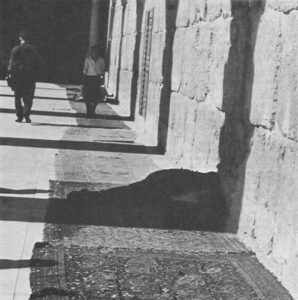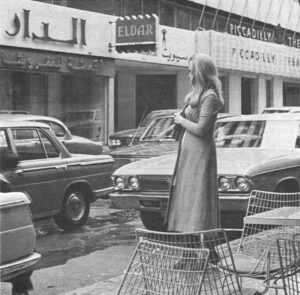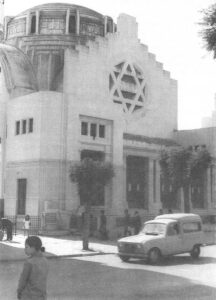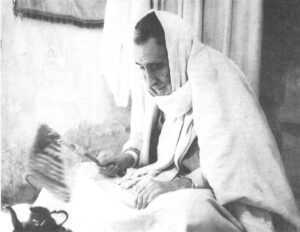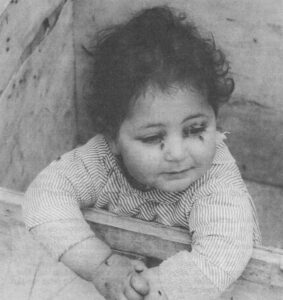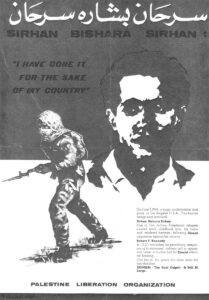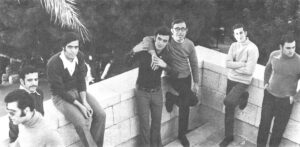When Israel occupied the West Bank of Jordan and the Gaza Strip following the Six-Day War in June 1967, the majority of the world’s Palestinians came under Israeli rule. According to Israeli statistics, the 974,000 Palestinians in the newly-occupied territories plus the approximately 500,000 Palestinian Arabs who had been Israeli citizens ever since Israel gained independence in 1948 total approximately one and one-half million people. The world’s Palestinians number an estimated two and one-half to three million.
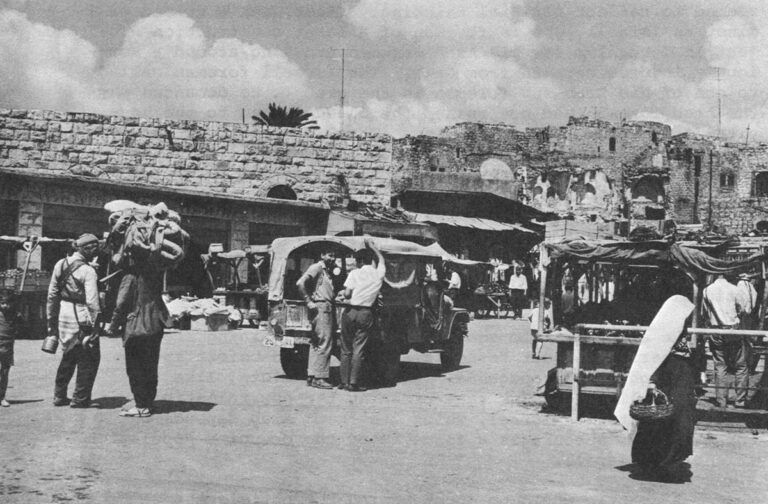
In the war’s aftermath Israel became an occupying military power, and the Arab population, an occupied people. But, while the military government, which has a free hand in what it calls the administered territories, is strict in security matters it has demonstrated flexibility and imagination in civilian affairs. Israel’s pacification program has established – at least for the time being – a relatively peaceful modus vivendi in the area. In particular, it has begun creating a new class of Palestinians dependent upon peaceful cooperation with its number one enemy, Israel, for prosperity.
The process started almost by accident. When the fighting ended in 1967, many people of the war-wrecked occupied territories needed work. Conveniently, Israel was in a postwar boom and needed workers. So Israeli authorities permitted and even encouraged the Arabs of the occupied territories to cross the Green Line – the 1949 Armistice Line between Jordan and Israel and between Israel and Egyptian-held Gaza Strip – to work in Israel.
What was considered a temporary manpower adjustment continues. And today fifteen percent of the administered areas’ “national” product, which has more than doubled since occupation, comes from wages earned in Israel. Approximately one-half of all West Bank wage earners actually work in Israel every day. (The West Bank with a population of 605,500 is the largest and most important economic and political region in Israel’s occupied territories.)
The majority of “imported” Palestinian laborers in Israel are organized by official Israeli labor exchanges. This means that the Arab’s salary and social benefits are the same as for an Israeli laborer engaged in the same work – mainly semi-skilled and unskilled construction and agricultural work.
Although workers in crafts and services are often unorganized and paid less than an equivalent Israeli worker, they still earn more than workers in Arab markets. Net wages earned in Israel by West Bank residents average seventy percent above those in the West Bank; in the Gaza Strip the difference is even higher – one hundred and ten percent. Like the organized Israeli worker, an Arab from the occupied areas working in Israel has part of his gross wages withdrawn. Some of the money goes toward a yearly paid vacation, insurance, sick leave, and benefits for children. The remainder goes for travel expenses as well as pension, maternity, and unemployment relief in a yet to be officially decided proportion.
This is not Israeli philanthropy. A self-sustaining occupied population eases Israeli economic burdens. If the people are earning a living, the government need not pay as much out of its own pocket. Officials believe that the labor policy also reduces security problems. According to the guidelines of the Coordinator of Government Operations in the Administered Territories of the ministry of Defense, “The only way to avoid a potential outburst of social forces, is to strive continuously for the improvement of the standard of living and the services of the underprivileged society.”
Arab labor also helps the shorthanded Israeli economy by freeing Jewish labor for increasingly sophisticated industrial and managerial positions in Israel. And Israel officials hope that the daily work pattern with personal contact between Palestinian and Israeli is making a fundamental and lasting contribution to peace in the Middle East.
Some Israelis, nevertheless, have reservations about importing Arab labor. It does not seem right to a Zionist ideologist to use Arab muscle to develop the soil of the Jewish homeland, a task that was also meant to restore the ghetto soul to “normal” economic and social behavior. The socialist kibbutzim whose raison d’etre is to collectively work the land find it especially difficult to adopt the capitalist practice of hiring labor – Arab or Jewish – to work the fields while kibbutznikim work in their more profitable and strategic industries. Some nationalists even oppose Arab-Israeli economic cooperation as the first step toward watering down the Jewish character of the State.
The State of Israel, in addition, does not want to grow dependent on Arab labor. As it is, twelve percent of today’s work force in construction comes from the administered areas. “If the borders were closed today, we wouldn’t have anyone to build housing, one of our most pressing needs,” stressed a government spokesman.
The government limits so-called imported labor to thirty to thirty-two thousand workers. Unofficially thousands more cross into Israel to bring the total to approximately forty to forty-five thousand workers. The labor force itself seems to expand to fill job opportunities that open up. Many of today’s workers had been unemployed or had never looked for work. One quarter of them are ostensibly jobless refugees on UNRWA (United Nations Relief and Works Agency) welfare. Labor officials claim, however, that even with no official limiting quotas, the West Bank has reached full employment, that it’s labor supply has been exhausted.
Keeping the number of imported laborers down also keeps enough workers at home to run the economy of the occupied territories. The quota appeases employers in the occupied territories who resent competing with Israel for hired hands. Arab owners of land, shops, and factories who claim Israel steals their workers, have had to pay the one-half of West Bank wage earners remaining in West Bank jobs, ten to fifteen percent more each year since the 1967 occupation. An agricultural worker, however, still makes half the salary of his counterpart in Israel.
Israel Stockman, an expert on Palestinian social conditions at Tel Aviv University’s Shiloah Institute, detailed how the Arab has profited from higher wages as well as new job opportunities and benefits in Israel. Wages for unskilled labor rose from $.75 a day in the pre-1967 period to $5 a day plus benefits – four times more than pre-1967 standards. Unskilled factory labor now receive $6 a day plus benefits, four times more than pre-1967 standards. And the skilled laborer’s wages have multiplied ten times from approximately $1.25 a day to $12 a day.
Some officials argue there would be no danger of labor shortages in the occupied territories if Israeli-size salaries were paid there. They reason that with equal pay, an Arab would prefer working closer to home.
Nevertheless, Minister of Defense Moshe Dayan has added another scheme for meeting labor demands in the occupied territories – busing unemployed Gaza Strip refugees to the West Bank. Officials reportedly hope that Gaza refugees will eventually tire of busing to work and move their entire families from overcrowded, troublesome Gaza Strip camps to houses in the less miserable camps which were abandoned in 1967 by West Bank refugees fleeing to Jordan’s East Bank. A few Gaza Strip refugees have already taken up residence in abandoned West Bank sites.
Upper class Palestinians seem to resent additional aspects of Israel’s labor policy. The high demand for unskilled and semi-skilled labor puts white-collar workers at a relative disadvantage. Some of them succumb to economic reality; there are reports of teachers quitting the schools to earn more money as laborers or tradesmen in Israel. However, many white-collar workers dislike soiling their hands in low prestige but high-paying work. Shlomo Amir, Assistant to the Minister of Labor for the Administered Territories reacted to this sentiment, “Well, they can wash their hands afterwards.” Another expert added that unrigorous training standards of Palestinian, so-called professionals disqualify them from jobs they would otherwise expect to fill.
One young Palestinian university graduate who reported that “finding an appropriate job is difficult,” further complained, “The high school students are being seduced into working rather than going on to higher education. They are losing their aspirations.”
This is a psychological matter, which does not concern the Ministry of Labor. Mr. Amir explained, “Nothing can change the economic fact of life that the Israeli economy is absorbing unskilled and semiskilled labor.” “If a man wants to work, he must be employed this way.” Israel is “opening colleges to train some engineers and technicians; but again the demand is in the tens not thousands.” Israel offers vocational training for about one thousand students.
Israelis labor policy in the occupied territories is causing a social chain reaction. According to labor expert Amir, “simply more people who had never worked before are working including refugees. Within agricultural settings, this touches women and boys who for the first time are earning a living and being exposed to a new way of life.” (Women and children have traditionally helped out on family plots but never earned independent salaries.)
The attraction of higher wages in Israel combined with the problem of higher prices as a result of West Bank’s integration into Israel’s inflationary economy is also forcing marginal farmers off the land and into jobs in more industrialized and urbanized settings. Since ninety-five percent of West Bank agriculture is unirrigated and since half the production cost of unirrigated crops is wages, marginal farmers can no longer afford to pay rising wage scales. They are leaving the land -perhaps to the women and children – and earning a living in Israel or in increasingly better paying jobs in the towns of the occupied territories or on the land of a bigger farmer. Seventy percent of the workers from the occupied territories working in Israel are classified rural by the Bank of Israel study, “The Economy of the Administered Areas, 1970.”
The big farmer partly compensates for rising prices, especially of labor, by using modern, Israel introduced agricultural techniques that increase production and by selecting more marketable money crops. Despite disruptions from rationalizing old agricultural methods, the big landowner – together with industrialists and merchants prospering in the West Bank’s rosy economy, have little economically to complain about.
Neither do the public servants. Israel has adjusted their wages to match rising prices four times. And West Bank public servants receive a second salary from the Jordanian government additional to the salary paid by the Israeli military government for services rendered. The Jordanian Kingdom pays the double salary as “resistance” money to encourage Palestinian loyalty to the Jordanian crown despite Israeli occupation, 1970 transfers from the government of Jordan amount to about $8,570,000. (Several months ago, Jordan stopped sending “resistance” money to some public servants, a move that is not known to be temporary or not.)
Public servants, landowners, merchants, industrialists, and professionals – and many combine more than one trade -who are economically well off still probably feel a psychological pinch as a result of changes wrought by Israel’s labor policy. As the laborer’s income rises – often at a faster rate than other income groups – members of the upper class must sense a potential challenge to their traditional place in society.
Israel has not set about changing the social composition of the occupied territories. Stability – which in the Israeli occupied Arab world rests on a traditional and rigid class hierarchy – is still the military government’s first priority. Nonetheless, Israeli officials brag that they have set in motion a “social revolution.”
At a recent Jerusalem social gathering of Palestinians and Israelis, a Hebrew University professor told a story to an upper class West Banker. As to be expected in Israel where government and public opinion often mesh, the professor’s tale seemed to reflect official thinking. “Last week a friend of mine, an Israeli, who is foreman of a large construction project in Jerusalem 5aw his Arab workmen crowding around a seriously injured workman from Gaza. The Israeli foreman called to one of his Arab sub-foremen in the group. He demanded why the Arab foreman had not rushed the bleeding man to the hospital. The Arab foreman replied, ‘What? And soil my car with this filthy thing from Gaza?'” The Israeli, said the raconteur, rushed the man to the hospital in his own automobile.
The professor, who parenthetically pointed out that he earns less than an Israeli bus driver, told his story to illustrate how Palestinians are being exposed to social democratic values, which he said are revolutionary to the traditional Palestinian way of thinking.
He also meant to show how Arabs are learning from personal experience about Israelis, who they had before known only through Arab propaganda. Israeli optimists, like the professor, like to think that creating the new Palestinian in daily contact with Israel, which the “new” Arab depends on for a living, encourages a force among the occupied population friendly to Israel.
A skeptic would no doubt remind the optimists that “men do not live by bread alone.”, especially Arab men and Israeli bread.
Received in New York on January 10, 1972.
©1971 Paula Stern
Paula Stern, a free-lance writer, is an Alicia Patterson Fund award winner. This article may be published with credit to Ms. Stern and the Alicia Patterson Fund.


